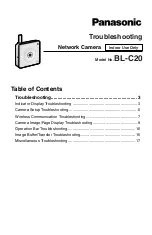
1-3
z
The server and the client use the DH key exchange algorithm and parameters such as the host key
pair to generate the session key and session ID and the client authenticates the identity of the
server.
Through the above steps, the server and client get the same session key and session ID. The session
key will be used to encrypt and decrypt data exchanged between the server and client later, and the
session ID will be used to identify the session established between the server and client and will be
used in the authentication stage.
Before the negotiation, the server must have already generated a DSA or RSA key pair, which is not
only used for generating the session key, but also used by the client to authenticate the identity of the
server. For details about DSA and RSA key pairs, refer to
Public Key Configuration
in the
Security
Volume
.
Authentication
SSH provides two authentication methods: password authentication and publickey authentication.
z
Password authentication: The server uses AAA for authentication of the client. During password
authentication, the client encrypts its username and password, encapsulates them into a password
authentication request, and sends the request to the server. Upon receiving the request, the server
decrypts the username and password, checks the validity of the username and password locally or
by a remote AAA server, and then informs the client of the authentication result
.
z
Publickey authentication: The server authenticates the client by the digital signature. During
publickey authentication, the client sends to the
server a publickey authentication request that
contains its username, public key, and publickey algorithm information. The server checks whether
the public key is valid. If the public key is invalid, the authentication fails; otherwise, the server
authenticates the client by the digital signature. Finally, the server sends a message to the client to
inform the success or failure of the authentication. Currently, the device supports two publickey
algorithms for digital signature: RSA and DSA.
The following gives the steps of the authentication stage:
1) The client sends to the server an authentication request, which includes the username,
authentication method (password authentication or publickey authentication), and information
related to the authentication method (for example, the password in the case of password
authentication).
2) The server authenticates the client. If the authentication fails, the server informs the client by
sending a message, which includes a list of available methods for re-authentication.
3) The client selects a method from the list to initiate another authentication.
4) The above process repeats until the authentication succeeds or the failed authentication times
exceed the maximum of authentication attempts and the session is torn down.
Содержание S7902E
Страница 82: ...1 4 DeviceA interface tunnel 1 DeviceA Tunnel1 service loopback group 1 ...
Страница 200: ...1 11 DeviceB display vlan dynamic No dynamic vlans exist ...
Страница 494: ...ii Displaying and Maintaining Tunneling Configuration 1 45 Troubleshooting Tunneling Configuration 1 45 ...
Страница 598: ...ii ...
Страница 1757: ...4 9 ...
Страница 1770: ...6 4 ...
Страница 2017: ...2 11 Figure 2 3 SFTP client interface ...
Страница 2062: ...i Table of Contents 1 URPF Configuration 1 1 URPF Overview 1 1 What is URPF 1 1 How URPF Works 1 1 Configuring URPF 1 2 ...
Страница 2238: ...1 16 DeviceA cfd linktrace service instance 1 mep 1001 target mep 4002 ...
Страница 2442: ...2 4 Set the interval for sending Syslog or trap messages to 20 seconds Device mac address information interval 20 ...















































